In 2023 you can order anything online.
A bulk order of kitty litter, a rare chilli pepper, even a star.
And while it’s long been said that money can’t buy happiness, one major commercial trend in recent years suggests something pretty close to it can be bought: magic.
The surge in sales for mystical tools and trinkets has been well-documented during and beyond the Covid-19 pandemic.
According to Lynn Araujo, the editorial and communications director for game giant U.S. Games Systems, sales of tarot card decks doubled in the five years to 2021.
Crystals have begun outshining diamonds, with teens and adults into their 20s and 30s contributing to a boom in gem sales which has experts predicting the market will be worth nearly $6 billion by 2027.
WitchTok (the section of video-based social media platform TikTok concerned with all things occult) is trending, with videos using the hashtag amassing well over 30 billion views worldwide by October 2022.
Astrological star charts, pentagrams and evil eyes can be spotted printed on every T-shirt, pillowcase and pencil on a walk down any UK high street.
And with spooky series Wednesday claiming the title of Netflix’s third most-watched series ever and birthing a renaissance of ‘whimsigothic’ fashion in its wake, it’s clear that although Halloween has long since passed, we are still very much living in the season of the witch.
When it comes to the ‘why’, you don’t need to be psychology expert to connect the dots.
‘Shiny thing syndrome’
Take a generous handful of global health panic, a pinch of isolation, stir in a dash of defiant feminism in response to reproductive rights uproar and rampant misogyny, a dollop of latent religious scepticism, and top it off with a sprinkle of existential angst amid sustained political unrest and economic collapse.
Allow to simmer across several lockdowns, and you have the perfect potion for a resurgence of Paganism and magical thinking.
In such frightening times, people want to feel connected, powerful and protected.
The figure of the witch represents those things, and the practice of the craft is an active way to engage with those feelings.
So it’s no wonder young people (particularly young women) worldwide are using social media to redefine what it means to be a witch.
But what is it about witchcraft that has made an ostensibly spiritual, ‘magical’ practice into a multi-million-pound industry?
“It’s shiny thing syndrome!” laughs Scottish folk witch Alexa Thompson, who presents her craft online as The Barefoot Witch.
“Witches generally aren’t minimalists. And sometimes the temptation is there to buy a pretty crystal just because it’s pretty,” she adds with a refreshing candour.
Indeed, there’s a huge focus on the visual when it comes to witchcraft.
‘WitchTok is toxic’
Glamour magic is defined as a spell which changes the way someone or something is perceived by others, without changing anything intrinsic about the subject.
So it makes sense that in the era of social media, where appearances (and indeed whole lives) can be curated by filters and contrived ‘realities’ are created, the line between magic and media has become blurred.
In the world of WitchTok, if it looks like a witch and it posts like a witch, it’s a witch. And therein lies the rub – what does a witch look like?
@yumekacake ok but i’m obsessed with my blue lace agate geode 🤤 #crystal #crystals #room #roomtour #witchtok #plants #planttok #witch
“WitchTok is quite toxic,” admits Alexa. “I’m on TikTok and I hate it, because it’s a lot of backstabbing and bullying and talking trash about other people’s practice.
“And then on Instagram you have all these beautiful, lovely altars that always look gorgeous – meanwhile mine looks like a mess 90% of the time!
“You’ll have people that will try and dress like Wednesday Addams or Sabrina and buy all the crystals. For them it truly is an aesthetic.”
For Alexa, that becomes a problem when new witches think they can buy their way to magical success, and in doing so, create an expensive, homogenised beauty standard for what ought to be a very individual spiritual practice.
The mass demand for natural gemstones, specialist herbs like white sage, and other ‘witchy’ products also raises concerns around ethical consumption and sustainability.
@elsaroshe I’ve tried my best #wednesday#wednesdayvibes #wednesdayaddams #wednesdaymakeup #jennaortega #wednesdaynetflix #grwm#grwmmakeup#메이크업 #웬즈데이
“I have friends who are quite new in their practice, and they have shelves and shelves of crystals, and they all want a big-ass cauldron,” Alexa quips, shaking her head.
“And I’m like: ‘You want to spend £80 on a cauldron? Are you going to use it?’ And they’re like: ‘No I just want to have it’.
“I think the problem is now things like you can go into [high street stores] and buy badly-written books called things like ‘Hex Your Ex’ or crystal kits and smudging kits,” she adds.
“Traditional witchcraft was things that you could forage, or find locally – the pebble you might have found in the woods has just as much power as that £20 crystal.”
A born witch
Alexa, 32, was taught the practice of folk magic by her grandfather, and has been practising herself since she was eight years old.
She describes it as “a craft, like knitting” and therefore something anyone can learn, at any time.
Based near John O’Groats, she tells me she deals mostly in spirits, and her practice is about connecting with the land around where she lives.
But she acknowledges that her storybook road into witchcraft – through her family and her remote surroundings – isn’t available to everyone, and accepts that pop culture and social media can have a positive part to play in helping others access the practice.
“I’m very lucky that I’ve come from a family that has practised this, which is rare. And people have to get into it somehow,” she explains.
“I remember watching Buffy the Vampire Slayer back in the 90s and absolute loving Willow [the witch].
“I said to my mum: ‘I want to be a witch’ and my grandfather told me, ‘Well you already are! We already do this’.
“So I wouldn’t ever look down on someone for getting into witchcraft through watching a certain thing, that would never ever bug me. If it brings someone to a spiritual path or enhances their life, it doesn’t really matter how they come to it.”
‘Not everything is for you’
But, she warns, it’s important that new witches, whether they come to the craft through walking in the woods or… well, watching The Craft, take the time to learn their place in the cultural landscape.
This is especially important when it comes to closed or semi-closed practices like smudging (a Native American ritual using smoking white sage), saining (a Scottish blessing ritual) and voodoo.
“I very much try to keep what I talk about to my personal practice or to Scottish witchcraft,” Alexa explains.
“I’m not going to sit here and talk about voodoo, for example, because it’s a closed practice.
“It’s a mix of African spirituality, Native American indigenous practice, and quite often the Catholicism that slave-owners practiced and then forced their slaves to adopt. As somebody whose ancestors were not part of those communities, I can’t practice it.
“Again, with smudging – it’s a closed practice, a Native American practice. And unless you’re doing the prayers, the chants etc, you’re actually just wafting about a quite expensive bundle of herbs.
“So the only thing I’d say is that the witchcraft community is a very welcoming place, but you have to remember your own history, your own heritage. And if someone tells you something is a closed practice, you have to respect that.
“Not everything is for you.”
‘Everything has a meaning behind it’
For those who don’t believe in witchcraft or engage in spirituality, it may be difficult to perceive where the aesthetic trend ends and the ‘real’ craft begins, as unlike knitting or woodwork, the result of witchcraft isn’t always tangible, or even visible.
If your craft is mixing plants, binding strands of hair, or hanging small ornaments in windows to either provoke or prevent ephemeral forces, who can tell if someone’s doing it right, right?
Alexa explains that for her, it’s all about intentionality.
“Everything that witches do, there’s a meaning and an intention behind it,” she says.
Behind her is her altar, which features some sprigs of winter woodland from outside her house, photographs of her ancestors, and a bright red candle burning in a bowl of herbs.
The candle, she explains, is a remembrance ritual for a friend who died some years before in a car accident. Red was the young girl’s favourite colour, hence the colour.
To the untrained eye, the red might mean there were red candles available at the shop; but this glimpse of attention to detail shows that for Alexa, the magic is dependent on such deliberate choices.
And whether or not the magic is real, the mindfulness is clear to observe.
As such, it would seem no one can verify who is and isn’t a witch; it’s self-defined. For the individual to believe it is to make it true. (That’s called manifesting, by the way.)
So is the mass consumerism of ‘witchy’ merch a signifier of mass belief? Or simply a passing fad, a costume that the young ‘uns will don for a while and then use to clog up landfills when the next big craze comes along?
“As a witch who’s practiced for 25 years, I can say anyone who’s doing it because it’s fashionable will quickly get bored of it and move on to the next trend,” Alexa says matter-of-factly.
“And anyone who really does feel that it enhances their life will stick with it.
“That’s the thing about witchcraft – it often happens in the quiet moments, and those are more powerful than the big elaborate spell.
“Just try not to piss off any spirits and you’ll be fine!”

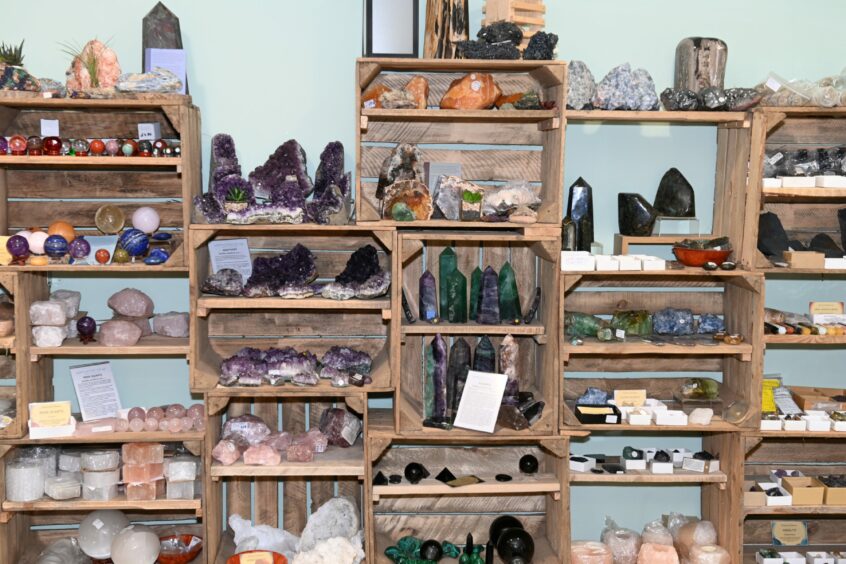
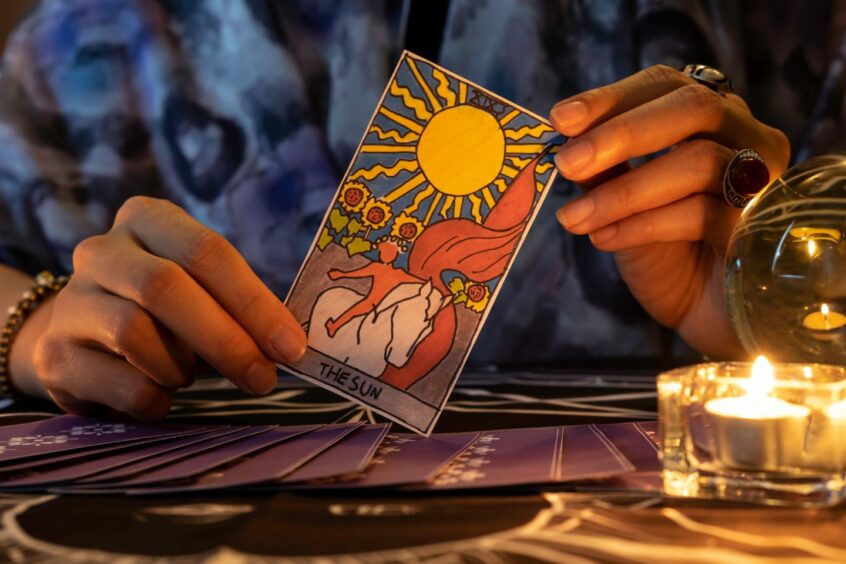
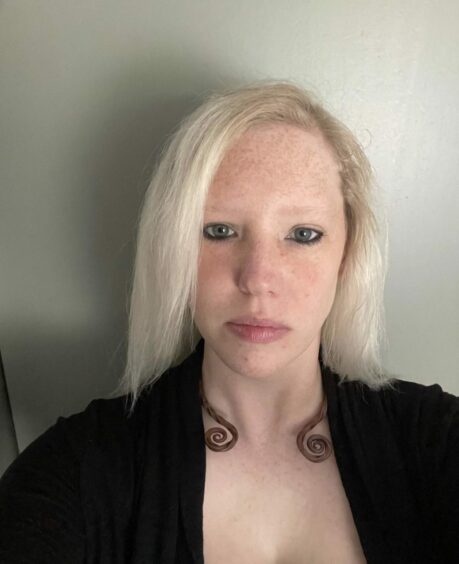
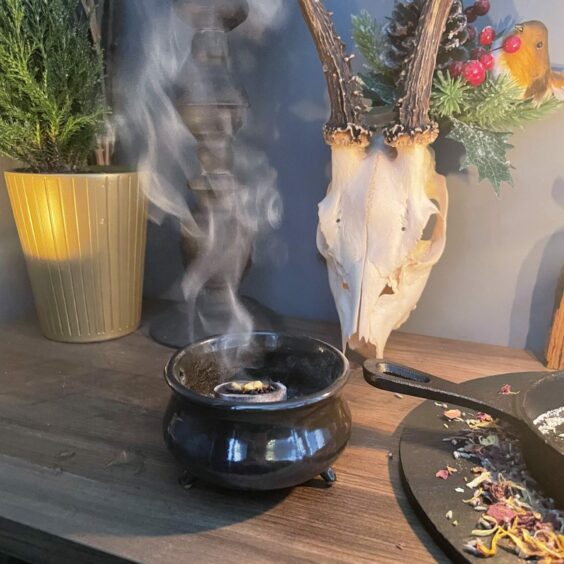
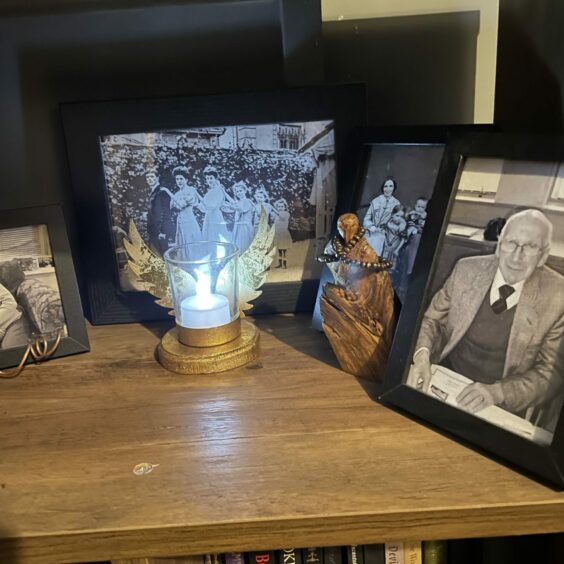

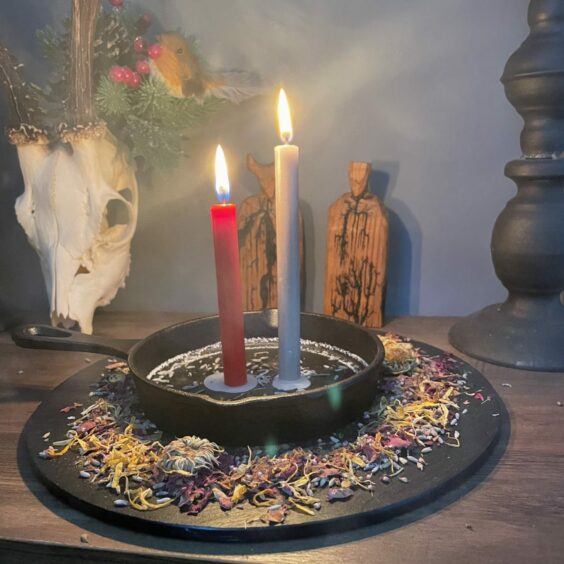









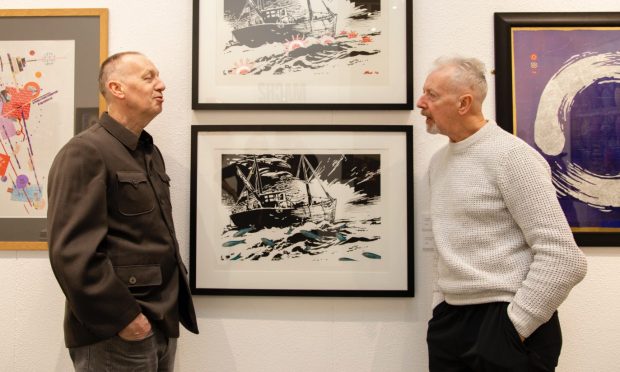
Conversation